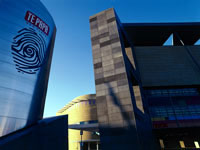Airport
Wellington International Airport
IATA Code: WLGLocation: The airport is situated five miles (8km) east of Wellington.
Time: Local time is GMT +12 (GMT +13 from the last Sunday in October to the last Sunday in March).
Contacts: Tel: +64 (0)4 385 5100 (24 hours).
Transfer between terminals: There is only one terminal. Arrivals is located on the lower level while departures is on the upper level.
Transfer to the city: The Stagecoach Flyer bus will cost between NZ$2.00 and NZ$17.00 for an adult fare, depending on where you are going. Shuttle services and taxis all go to the city centre for around NZ$15 and NZ$30 respectively.
Taxis: Taxis can be hailed outside the baggage claims area and cost up to NZ$35 to go to The Terrace, Lambton Quay, Railway Station, Courtenay Place and Seatoun. Fares to Johnsonville, Lower Hutt and Tawa range between NZ$ 45 and NZ$ 65, while it costs up to NZ$100 to go to Uppper Hutt and Porirua.
Car rental: Car rental companies include Avis, Budget, Hertz, Europcar and Thrifty.
Facilities: Facilities at the airport include left luggage, bureaux de change, ATMs, bars, shops and restaurants, a parent's room, post office and a tourist information and hotel reservations desk. Disabled facilities are good, those with special needs are advised to inform their airline or travel agent in advance.
Parking: Long and short-term parking is available.
Departure tax: Airport tax is NZ$25 (adults) and NZ$10 (children), in transit passengers (up to 24hrs) are exempt.
Website: www.wellington-airport.co.nz
Visit worldtravels.com for the full guide to Wellington. Build a complete Wellington travel guide and email to your clients - sign up for a trial subscription of World Travels Pro.
Wellington

The capital city of New Zealand, Wellington is located at the southern tip of the North Island. It is situated on a splendid harbour and hemmed in by steep hills, creating a compact inner city centre with a mix of historic and modern buildings. It is the second largest city in the country, the energetic centre for culture and arts, and is the entertainment, commercial and political capital of New Zealand, with an air of pronounced sophistication and vibrancy. Apart from its importance as the capital, it is the main departure point for the South Island.
Also called 'Windy Wellington', it lives up to its name especially in winter when the lashing winds from the Cook Strait whistle through the wind funnels created by the high-rise buildings of the central business district. The bustling, pretty waterfront area is a sheltered refuge with a graceful promenade, featuring shops, restaurants and various leisure activities. Brightly coloured sails scud across the harbour, the reliable wind providing excellent sailing and windsurfing opportunities. The ferry to the picturesque Days Bay, one of Wellington's best swimming beaches, affords excellent views of the city from the water. Dominating the waterfront is the Te Papa Museum, the pride and joy of the nation that embodies the quintessence of New Zealand and its people.
In the city centre the Parliamentary District is the architectural masterpiece of Wellington, including the Old Government Building, the second largest wooden building in the world; the unmistakable modernist Beehive, the executive offices of Parliament; Parliament House and the Victorian Gothic National Library.
The cable car takes people up to the Botanic Gardens for vistas of the city centre and across the harbour to the Hutt Valley, one of the scenic locations used in the filming of 'Lord of the Rings'. Another film site is Mt Victoria, offering sweeping panoramic views of the city and its suburbs, the surrounding hills and bays, and the harbour.







